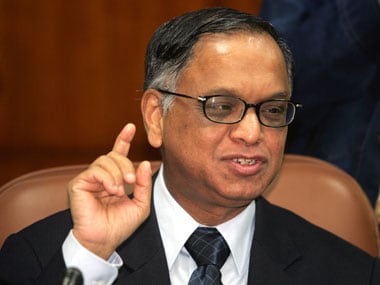Before sustainability was cool, Indian moms had already mastered the art of recycling

Featured Image/Illustration: Robin Chakraborty/Arre
By Ramjaane
When I was growing up, milk packets would be washed and stuck on kitchen tiles for drying – for rotis to be packed in for lunch. After a little wear and tear, mom would fold the plastic packets and use them as a trivet. Long before recycling became hip, every middle-class household practiced it.
Once upon a time, a disciple of Buddha asked him for a new robe. The robe that the disciple was wearing was in tatters. Buddha agreed, gave the disciple a new robe, but asked him what he did with the old one. The disciple said, “I made a curtain of it.” And the old curtain, Buddha asked. “Oh that, I turned into a bed sheet.” And the old bed sheet? “Oh that, I made a mop of it; it was in tatters.” And the mop? “The mop, dear lord, was reduced to a few strands, so I made wicks out of it and light one every evening.” Buddha believed the disciple was enlightened.
I think that disciple is an Indian mom.
Indian mothers repurpose things as if their lives depend on it. Nothing ever dies an untimely death in our homes. What was a curtain at Diwali, will become a sofa cover by Holi. There is nobody more prudent than an Indian mother.
In my house, milk packets would be washed and stuck on kitchen tiles for drying. In these packets, I would be given rotis for lunch. Aluminium foil was never a thing. After a little wear and tear, mom would fold the plastic packets and use them as a trivet of sorts – she’d place them under the oil or ghee container so that her black kitchen counter wouldn’t have a stain. Some milk bags were torn open and glued together with molten wax to create a large plastic sheet – a mat we used on picnics.
Truth is, what was once labelled kanjoosi has now been rebranded as sustainability. What was considered cheap once is cool today.
For the longest time I believed repurposing household items was the forte of kanjoos, Kobra (Kokanastha Brahmin) aais, but when I visited my friend’s houses I realised that their mothers were no different. Recycling (at less embarrassing levels, of course) was practiced everywhere in our middle-class colony. The back pages of calendars doubled up as sketchpads; newspapers became book covers. Glossy magazine paper turned into cones to eat bhel in. Little pieces of cardboard were used as spoons for the bhel, once the puri got soggy. Soft cotton sarees became “paangruns” – sheets to cover yourself when sleeping. Three summer sarees would be stitched together and a cosy duvet for the winter was ready.
The save-the-planet folks should consider appointing an Indian mother as its president. This art of recycling is every environmentalist’s wet dream.
My mother, however, pushed it to the limit. I once mentioned to her how clean a friend’s balcony was, and that his mother washed it daily. Mom took it up as a challenge. She started washing our balcony every day, but without wasting water. She collected the soapy water gushing out of the washing machine in buckets and used it to clean the balcony.
I grew up on bucket baths, not showers. I was taught to use two mugs of water after a wee as a child and was instructed not to empty the flush tank. This is exactly what Cape Town did as they faced Day Zero. “If it’s yellow, let it mellow,” was the advisory pasted on public loos at the airport.
At home, we recycled food too. Marathi cuisine has dishes dedicated to leftover food. Because food is considered poorna Brahma, to waste it was a sin. And what can’t be wasted, must be reused. In Maharashtrian households, leftover rotis are served as “phodnichi poli” (tadka-wali roti) or “poli che ladoo” for breakfast. I have no doubt every kitchen in every corner of India has their own version of the poli and ladoo. Mumbai’s famous pav bhaji was originally a mash of leftover veggies. This no-waste philosophy had as much to do with affordability as it had to do with wastage. It is a mentality, something that most middle-class homesadhere to. Today, in the US, where 40 per cent of food goes to waste, efforts to use leftovers are lauded.
As children we always thought of our moms as cheap; their thrifty ways often embarrassed us. But then, we grew up and travelled the world. We saw Westerners make pen stands of dried coconut shells and models walking the ramp in a recycled paper cup dress, and we were in awe.
The goras took our $4 by calling it sustainable living and we gleefully gave them $5, an extra one for the environment. Today, we are ready to shell out a few thousand bucks on eco-fashion. We now return home and lecture our mothers for using plastic bottles and dabbas. “How can you be so irresponsible, mom?”
Truth is, what was once labelled kanjoosi has now been rebranded as sustainability. What was considered cheap once is cool today. But being frugal is cool only when when are not forced to be economical. Our parents raised us on a strict diet of “zyada paise nahi hai,” so when we saw them recycling, we thought of them as chindi. Their frugality and wisdom was born out of a need and hence was never aspirational.
Today, our disposable incomes are rising, we are seeing a glimpse of abundance for the first time, and hence we don’t hesitate to put out pictures of the curtain which is converted to a shopping bag on Instagram. Because now it’s not longer being cheap, it’s just being #woke.
Ramjaane is an author at Arre.

 Amit Lahiri is the Chief Sustainability Officer at O.P. Jindal Global University. He has developed the flagship graduate certificate program in International Business Management, and also the first course in Corporate Social Responsibility. He has graduate degrees in both natural and social sciences, and a Masters degree in the Life Sciences from Bombay University and Environmental Studies from York University, Canada. He has also participated in an Ontario Ministry of Education & Training-sponsored research project on integrating immigrants in the Canadian economy.
Amit Lahiri is the Chief Sustainability Officer at O.P. Jindal Global University. He has developed the flagship graduate certificate program in International Business Management, and also the first course in Corporate Social Responsibility. He has graduate degrees in both natural and social sciences, and a Masters degree in the Life Sciences from Bombay University and Environmental Studies from York University, Canada. He has also participated in an Ontario Ministry of Education & Training-sponsored research project on integrating immigrants in the Canadian economy.

 The details of key schemes and the financial support offered by states and the Centre under some of the flagship schemes are given below.(Illustration: C R Sasikumar)
The details of key schemes and the financial support offered by states and the Centre under some of the flagship schemes are given below.(Illustration: C R Sasikumar)
